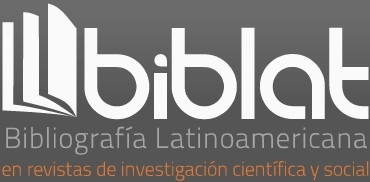Une mémoire sans souvenirs
DOI :
https://doi.org/10.35494/topsem.2020.2.44.700Mots-clés :
théorie de l'attachement, génétique, épigénétique, traumatismeRésumé
Cet article décrit les processus qui renvoient à l’inscription transgénérationnelle des traces du traumatisme sous la forme d’une mémoire sans souvenirs. Cette transmission constituerait un type spécifique de post-mémoire. L’hypothèse centrale, en rapport étroit avec la théorie de l’attachement, suppose que, lorsqu’une personne ayant subi un traumatisme devient père ou mère, la qualité des soins qu’elle prodigue à son enfant peut être perturbée par une ségrégation défensive des émotions qui, à son tour, risque de provoquer chez ce dernier des difficultés pour éprouver un sentiment de sécurité auprès de son parent. Autour de la problématique du traumatisme parental, d’autres hypothèses son également considérées, notamment dan le cadre des approches génétique et épigénétique.
Téléchargements
Références
“Socialization” as a Product of Reciprocal Responsiveness to Signals. En M. P. Richard (Ed.), The Integration of
a Child into a Social World (pp. 99-135). Londres. Cambridge University Press.
Ainsworth, M. D. S., Blehar, M. C., Waters, E. & Wall, S. (1978). Patterns of Attachment. A Psychological Study of
the Strange Situation. Hillsdale, N.J. Lawrence Erlbaum.
Bakermans-Kranenburg, M. J., & Van Ijzendoorn, M. H. (2004). No Association of the Dopamine D4 Receptor
(DRD4) and-521 C/T Promoter Polymorphisms with Infant Attachment Disorganization. Attachment & Human
Development, 6(3), 211-218.
Bowlby, J. (1980). Attachment and Loss. Loss, Sadnes and Depression (Vol. 3). Nueva York. Basic Books.
Bretherton, I. (2000). Des modalités de relation aux modèles internes : la perspective de la théorie de
l’attachement. En O. Halfon, F. Ansermet & B. Pierrehumbert (Eds.), Filiations Psychiques (pp. 33-60). París.
PUF.
Fonagy, P., Steele, M., Moran, G., Steele, H. & Higgitt, A. (1993, November). Measuring the Ghost in the Nursery:
An Empirical Study of the Relation Between Parents’mental Representations of Childhood Experiences and
their Infants’ Security of Attachment. Journal of the American Psychoanalytic Association, 41(4), 957-989.
Fraiberg, S. H., Adelson, E. & Shapiro, V. (1975). Ghosts in the Nursery: A Pshychoanalytic Approach to the
Problems of Impaires Infant-Mother Relationship. Journal of the American Academy of Child Psychiatry, 14(3),
387-421.
Haft, W. L. & Slade, A. (1989, June). Affect Attunement and Maternal Attachment. A Pilot Study. Infant Mental
Healt Journal, 10(3), 157-172.
Lakatos, K., Nemoda, Z., Toth, I., Ronai, Z., Ney, K., Sasvari-Szekely, M. & Gervai, J. (2002). Further Evidence for the
Role of the Dopamine D4 Receptor (DRD4) Gene in
Attachment Disorganization: Interaction of the Exón III 48-bp Repeat and the-521C/T Promoter Polymorphisms.
Molecular Psychiatry, 7, 27-31.
Main, M. & Hesse, E. (1990). ‘Parent’ Unresolver Traumatic Experiences are Related to Infant Disorganized
Attachment Status: Is Frightened adn/or Frigtening Parental Behavior the Linking Mechanism? En. M.T. Greenberg, D. Cicchetti y E.M. Cummings (Eds.), Attachment in the Preschool Years (pp. 161-182). Chicago.
University of Chicago Press.
Meaney, M. J., Aitken, D. H., Bodnoff, S. R., Iny, L. J., Tatarewicz, J. E. & Sapolsky, R. M. (1985). Early Postnatal
Handling Alters Glucocorticoid Receptor Concentrations in Selected Brain Regions. Behavioral Neuroscience,
99(4), 765-770.
Monhonval, P. & Lostra, F. (2014). Transmission transgénérationnelle des traits acquis par l’épigénétique.
Cahiers de Psychologie Clinique, 43(2), 29-42.
Premack, D. & Woodruff, G. (1978, December). Does the Chimpanzee Have a Theory of Mind? Behavioral and
Brain Sciences, 1(4) (A Special Issue on Cognition and Consiousness in Nonhuman Species), 515-526.
Saavedra Rodríguez, L. & Feig, L. A. (2013, June). Chronic Social Instability Induces Anxiety and Defective Social
Interactions Across Generations. Biological Psychiatry, 73(1), 44-53.
Schuengel, C., Bakermans-Kranenburg, M., Van Ijzendoorn, M. H. & Blom, M. (1999). Unresolved loss and infant
disorganization. En J. Solomon y C. George (Eds.), Attachment disorganization (pp. 71-94). Nueva York.
Guilford Press.
Stern, D.N (1989). Le monde interpersonnel du nourrison. Une perspective psychanalytique et
développementale. París. PUF (Le Fil Rouge).
Weaver, I. C. G. (2004, July). Early Environmental Regulation of Hippocampal Glucocorticoid Receptor Gene
Expression: Characterization of Intracellular Mediators and Potential Genomic Target Sites. Annals of New
York Academy of Sciences, 1024(4), 182-212.
Téléchargements
Publiée
Comment citer
Numéro
Rubrique
Licence

Tópicos del Seminario is licensed under a Creative Commons Reconocimiento-NoComercial-CompartirIgual 4.0 Internacional License.














